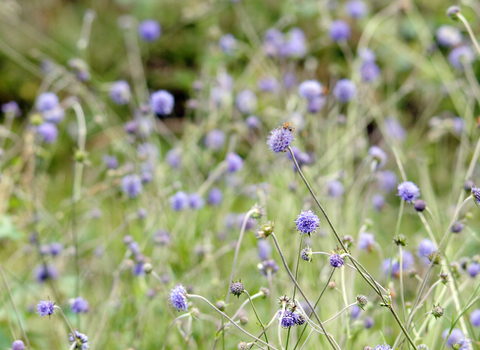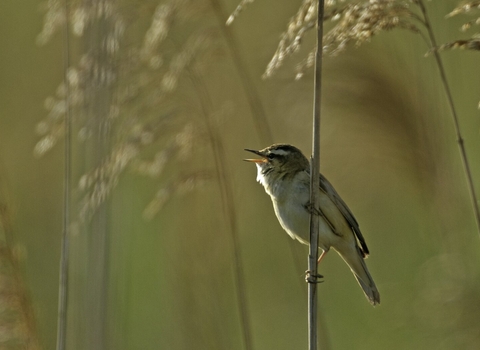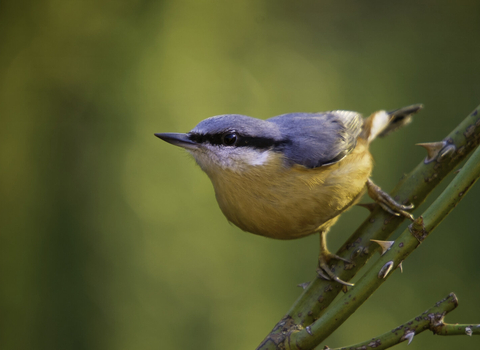Rhos Marion
Location
Know before you go
Dogs
When to visit
Opening times
Open access nature reserveBest time to visit
June to SeptemberAbout the reserve
Rhos Marion is made up of eight pasture fields enclosed by large banks and hedgerows. These hedgerows are characteristic of Southern Ceredigion and Northern Carmarthenshire and are mostly of laburnum, which is of course a non native species, introduced to the UK in the 1500s. No one knows why laburnum is so common a hedgerow shrub in the area!
The lower lying wetter fields to the east of the reserve are of Rhos Pasture, a mixture of wet grassland with the grasses such as Brown Bent, Purple Moor Grass, Sweet Vernal Grass and Yorkshire Fog with Common Sedge and Carnation Sedge.
The site is rich in orchids, particularly Heath Spotted Orchid, but also Common Spotted and Northern Marsh Orchid. Other notable flowering plants include Bog Asphodel, Bog Pimpernel, sneezewort, betony, angelica, knapweed, meadowsweet greater bird’s foot trefoil, Devil’s-bit Scabious, Meadow Thistle and Ragged robin.
The upper fields to the west are drier and are closer in feel to a typical species rich hay meadow type, and in late summer is a blaze of bluey purple with masses of devil’s bit scabious which a small population of marsh fritillary butterfly use as their foodplant.
There are also three other “fields” which have long since scrubbed over. These are made up of hawthorn,willow,blackthorn and hazel and are attractive to a number of bird species.
The old, overgrown hedgerows are fantastic but the colours and diversity of the grassland flowers are truly magical. Flowers such as heath and common spotted orchid, ragged robin, knapweed, bird’s foot trefoil, betony and many others cloak the grassland.
Devil’s bit scabious covers the fields in blue in September and supports a small population of marsh fritillary butterfly.



